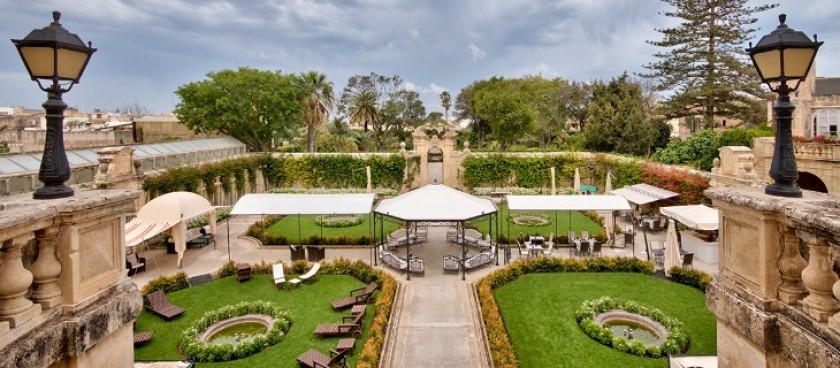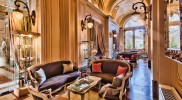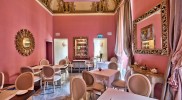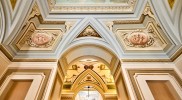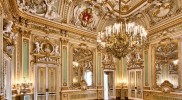- #MT12
- Palazzo Parisio 29, Victory Square Naxxar NXR 1700 Malta
- +35621412461
- info@palazzoparisio.com
- http://www.palazzoparisio.com/
- Prices*:
Garden visits (only): 5.00€
House & Gardens:
Adults: 15.00€
Seniors: 12.00€
Students (over 15 years): 9.00€
Children (5-15 years): 5.00€
Children (under 5 years): Free - * - opening and closing times as well as entrance prices, are subject to alterations without notice. Visitors are advised to check before visiting.
- 35.8962970, 14.5114390 Copy to clipboard Copy
-
#Castles , #Parks
Company History
The Marquis Giuseppe Scicluna bought Palazzo Parisio in 1898 and it is through him that the property received its greatest renovation, which fortunately still survives till today largely in its original form. The Marquis Scicluna, a wealthy Maltese banker and merchant; created a showcase for Maltese art which closes the eclectic style of the 19th century propagated by Italian artists on the island.
The property dates further back in history and its legacy of owners add to its prestige. The first reference of the site dates to the time of the Order of the Knights of St John, when it was used by Grand Master Don Antonio Manoel de Vilhena who ruled the Order between 1722 and 1736. The Grand Master used his property in Naxxar as his hunting lodge; where he would take a break from the bustling life in Valletta. The Marquis Scicluna retained some elements which date to the time of the Grand Master Vilhena such as the Orangerie and some architectural elements found in the garden.
After the death of the Grand Master the property was taken under the wing of the Order of St. John and it is probably through this that it was passed down to the next owners; the Parisio family. The Cavalier Don Domenico Parisio, a nobleman from Reggio Calabria, married Anna Moscati from a Maltese Aristocratic family. The Parisio's owned a number of properties such as a Palazzo Parisio in Valletta, which Domenico's son Paolo loaned to Napoleon during his stay on the island. The Naxxar property became the summer residence to the Parisio's and eventually served as Paolo’s permanent residence.
Paolo married but died without issue and the Palace was lived in till 1856 where it was used by the Micallef family who claimed themselves as owners. The Micallefs began to rent it out to the Jesuit community in 1880, which used the Palazzo Parisio as a ‘university’; authorised to confer degrees! The first descriptions of the Palace come from this time and the students describe how they slept on the second floor and could reach the ceiling by standing on their beds. The garden is also mentioned and described close to as it is today: being divided into three sections. Students remarked on how large the grounds were; so much so that they could recite the entire rosary before reaching the other side.
The Jesuits planned on purchasing the Palace but could not reach an agreement with the 32 caretakers who had declared themselves heirs. It was the Marquis Scicluna who, driven by his vision, took the matter to court and the entire land was released to the Marquis on 12th June 1898 for the sum of £1500.
The marquis put together a team of architects, sculptors and artists in order to implement his vision for Palazzo Parisio. The team was headed by the renowned Italian architect Carlo Sada and consisted largely of Italian painters and sculptors having ties with Malta. Sada is responsible for designing rooms such as the Ballroom and is well-known in Italy for his designs such as the Teatro Massimo Bellini in Catania. Also in charge was the Maltese Annibale Lupi who acted as personal architetto to the Marquis. The team of painters included the two Romans Giacomo Olzai and Filippo Venuti. Their works in Palazzo Parisio are important in both the artists’ oeuvre; the works are Olzai’s only examples in Malta whilst Venuti created what can be considered to be his best private works on the island. Giuseppe Valenti took care of the sculptural architectural work such as the paving and the Grand Staircase. The team of stuccoists was headed by Vincenzo Cardona and he was helped by his students from the Malta School of Arts. Giulio Moschetti also worked on the project and took care of the large figural work whilst Cardona and his students focused on the decorative elements.
The project began in the first months of 1900 and the majority of the work was finished in 1906 when the Marquis Scicluna, his wife and their four year old son John moved in. The main decoration had been completed but some finishing touches still had to be made to the place, such as the curtains, which were never hung up and discovered whilst restoring Palazzo Parisio. The palace was never completely finished due to the untimely death of the Marquis Scicluna on the 14th February 1907. The Marchesa and John moved out and back to their house in San Pawl Tat-Targa. Despite this tragic ending to the story; Palazzo Parisio’s original decoration has been preserved and the Marquis Scicluna’s vision for his property has been kept as he intended and looked after so that many generations can be inspired by his artistic ideas.
Grandi Giardini Italiani
Palazzo Parisio is proud to have been invited to form part of the renowned Grandi Giardini Italiani collection. This association heralds some of the most beautiful and celebrated gardens across the Italian region.
Palazzo Parisio is actually the only garden to be included in the set that is not within the Republic of Italy. An excerpt from the book on the Grandi Giardini Italiani describes Palazzo Parisio as:
‘… an extraordinary complex of walls and gardens overlooking the sea, an architectural and cultural unicum with the site, though indissolubly linked to the concept of the Italian garden.
‘The refined architecture of the interiors is made even more precious by the exterior, with the unusual trompe-l’oeil of the eighteenth century Orangery, the fountains and two enchanting plant arrangements created by Sicilian gardeners, both a mixture of Italian-style symmetry and scented, vivid Mediterranean character.’
